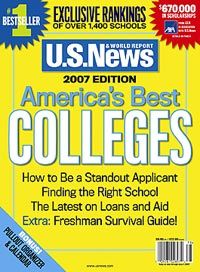Among the many methods people use to judge colleges and universities, few are as widely used as simple rankings. These lists, usually ordered by numerical scores or letter grades, are inherently appealing because they're easily understood and they tell us exactly where the authors think a given school stands. But they can also be confusing because some magazine, book and online publishers use vastly different criteria when determining academic status.
So which ranking is correct, and how are they calculated? What are some common criticisms of college rankings, and can you trust them? In this article, we'll answer these questions and more as we explore the ever-popular system of college rankings. We'll also take a look at some alternatives to college rankings that many schools are pursuing.
Advertisement
The most prominent set of college rankings in the United States is published by U.S. News & World Report. Every year since 1987, it has published its rankings in magazine form, and more recently in accompanying paperback guidebooks. The magazine now ranks graduate schools, too. Many schools use these rankings as part of their promotional materials, trumpeting a rise in standing, hanging celebratory banners or posting the good news on their Web sites.
Some companies simply offer rankings of what they consider the best schools, with a variety of criteria used to calculate an overall score. Others break down lists of top schools into categories like academics, social life, small colleges, big colleges, liberal arts schools, public schools, undergraduate experience and happiest students. Besides U.S. News & World Report, other popular rankings include Princeton Review guidebooks and those produced by the Center for University Rankings, which rates research universities.
Books like "College Prowler" offer an insider view from current students and recent graduates. These guidebooks present information about topics as varied as a school's party scene. Several Web sites, like studentsreview.com, provide college rankings completed by actual students, and these sites also claim to offer a behind-the-scenes view with information not found in traditional guidebooks.
In other countries, newspapers often provide rankings, such as Maclean's annual guide to Canadian colleges and universities. The European Union has also published reports on universities that included rankings. In addition, Newsweek published a list in August 2006 of the "Top 100 Global Universities." The list focuses on a school's international makeup, global impact, connections to other parts of the world and research accomplishments [source: Newsweek].
In the next section, we'll take a look at how publications calculate college rankings.
Advertisement






